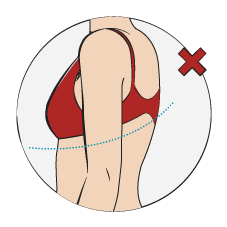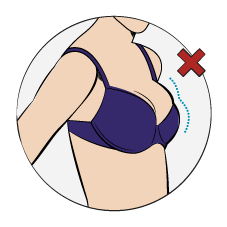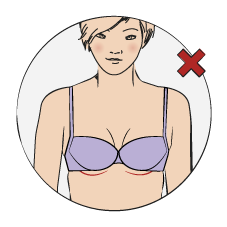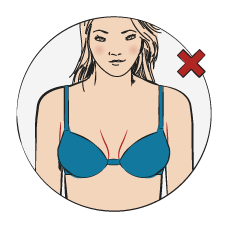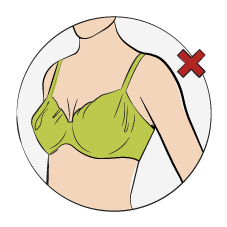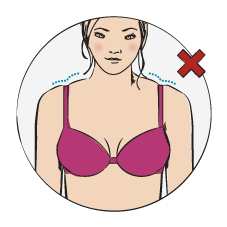How To Measure Your Bra Size
Bra Fitting Guide
Bra sizes might seem overly complicated, but that mostly comes down to the sheer number of combinations. Every woman is different, and so are their breasts. It's important to find the right lingerie for you.
The first thing to understand about bra measurements is that there are two sizes to consider: the band size and the cup size.
We often equate our band size to our clothing size; If you’re a size 14 top, you might assume you are a size 14 in bras. Yet this isn’t always the case, especially if you have big boobs. Cup sizes can be especially confusing, asa cup size in a 14C is different to a 12C.
Since the size of your breasts can vary over time, it’s important to double check your bra size at least annually and whenever you gain or lose weight. An ill-fitting bra won’t only look bad – it can be super uncomfortable, and sometimes even painful.
Before you begin measuring, please note these important points:
- You should wear your best fitting bra when taking your measurements.
- Remove all other clothes before you measure up.
How to Measure Your Band Size
Measuring your under bust is easy with a measuring tape. The trick is to wrap the tape around where the band will sit, which is under your breasts and straight across your back. Keep the measuring tape taut, but not tight.
Make sure to measure under your boobs, as the band should sit comfortably against your ribcage, not breast tissue … Ouch!
How to Measure Your Cup Size
Measuring your cup size is a little more complicated, so feel free to break out the calculator! Wrap the tape around your chest, laying the tape over your nipples. Then you simply subtract this measurement from your under bust measurement.
See our Bra Size Chart below to find your perfect bra size…
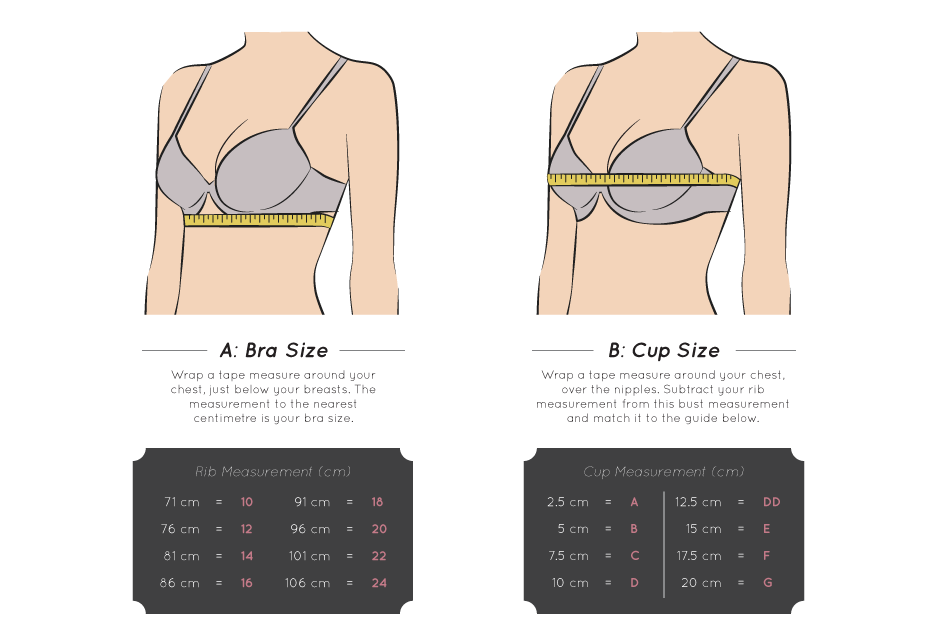
If you find you need to go up a band size, your cup size will likewise change because cup sizes aren’t consistent across body sizes. As you work your way up band sizes, you reduce your cup by one full size. So, if you are a 10C, but you want to go up to a size 12 band size, you will become a 12B. Moving up another band size brings you to a 14A.
Getting the Right Bra Fit
A good bra enhances your assets. Too many women are walking around wearing bras that are uncomfortable, unsupportive, and ill-fitting.
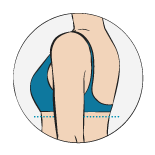 |
The underband is horizontal around the body Your underband should fit snugly around your body, but not too tightly. If you can fit two fingers comfortably underneath the band, you’ve got it right. |
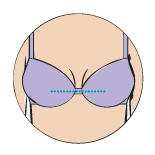 |
The centre of the bra is flat Make sure the centre of your bra between the cups is flat against your chest. Each cup should comfortably hold your breasts. |
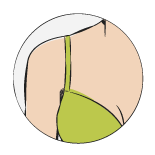 |
Wires and seams should feel invisible You know you’ve found the perfect fitting bra when you don’t feel it at all. Wires and seams shouldn’t dig into your breast or underarms. |
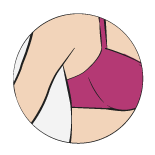 |
Straps are comfortable Your straps should be secure without being tight or painful. The right fit ensures the straps don’t glide off your shoulder. There should be no hard clasps or plastic bits digging into your back or shoulders. |
Common Bra Problems and Solutions
There are a lot of ways a bra can go wrong, which is why it’s so important to measure and get the best bra for your breasts and body type.
If you are having trouble figuring out what your bra problem means, this list of common bra problems can help.
Your Bra Underband is Riding Up at the Back |
Your Breasts Spill Out of the Bra |
The Underwires Don't Stay Flat on Your Chest |
|
|
|
|
| PROBLEM The bra underband arches up the back. Your underband is probably too big or has lost elasticity from wear-and-tear. |
PROBLEM When the cups are too small, you get "double busting". Your bust is not fully encased in the cup and spills out over the top or under the arm. |
PROBLEM The underwires lift away from your bust at the bottom of the cup. This happens when your cup is too small – the wires should always sit under your breast. |
| SOLUTION Decrease your underband size. You might need to go up a cup size in the process. Replace older bras. |
SOLUTION Increase your cup size, for example, from a size A to a B. Ensure that your underband still fits correctly. |
SOLUTION Increase your cup size, from a size C to a size D, for example. Make sure your underband still fits right. |
You Have Discomfort at the Sides of Your Breasts |
The Cups Wrinkle or Sit Away From Your Breasts |
Bra Straps are Leaving Sore, Red Marks |
|
|
|
|
| PROBLEM If you’re experiencing pain or discomfort at the sides of your breasts, check the wire positions. Breast discomfort can cause health issues. |
PROBLEM Your cups wrinkle or gape, sitting away from your breasts. This is a sign the cups are too big for your breasts, causing a looser fit and less support. |
PROBLEM Your straps are cutting into your shoulders, probably because you’ve overtightened them to pull the cups up for more support. |
| SOLUTION Check your cup size and the underband. Make sure you can fit two fingers beneath the underband. |
SOLUTION Reduce your cup size and ensure the underband still fits snugly. Adjust your bra straps slightly as well. |
SOLUTION If you’ve fit the bra well, the cup should provide the right level of support, with the straps only serving to hold the cup up. |
